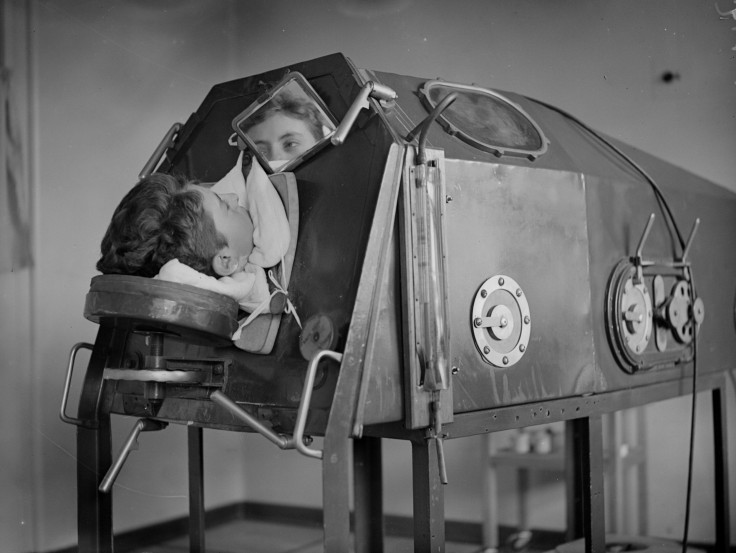What Is An Iron Lung? Some Polio Survivors Still Use Now-Obsolete Machine

Have you ever thought of a device in which the human body is encapsulated and then forced to breathe? Well, half-century old ‘iron lung’ serves this purpose. An iron lung is a non-invasive negative-pressure ventilator used to artificially maintain respiration during an acute polio infection.
Physicians who treated people in the acute, early stage of polio saw many patients were unable to breathe when the virus’s action paralyzed muscle groups in the chest, according to a report published by the National Museum of American History (NAMH). At this stage, death was often, but those who survived usually recovered almost all of their former strength.
In 1927, Philip Drinker and Louis Agassiz Shaw at Harvard University devised a version of a tank respirator that could maintain artificial respiration until a person could breathe independently, which is usually after a week or two. However, some polio survivors with permanent respiratory paralysis relied on them completely. The machine was powered by an electric motor with two vacuum cleaners, and a pump changed the pressure inside the rectangular, airtight metal box, pulling air in and out of the lungs.
To use the device, patients are required to lie down inside a cylindrical steel drum. An opening allows the head and neck to stick out, while the rest of the body is sealed forming an air-tight compartment. Iron lung works by creating a vacuum to mechanically draw in oxygen to the lungs of the patients whose central nervous system and respiratory function were ravaged by polio.
Later, American inventor John Haven Emerson refined this device and the cost was cut nearly by half. Emerson’s iron lung had the patient lay on a bed that could slide in and out of the cylinder, according to the need. The side of the tank had portal windows so attendants could reach in and adjust limbs, sheets or hot packs.
These machines are now obsolete and have been replaced by positive-pressure ventilators such as modern-day respirators.
In 2013, the Post-Polio Health International (PPHI) organizations estimated there were six to eight iron lung users in the United States, according to a report in Gizmodo. Initially, PPHI executive director Brian Tiburzi said he doesn’t know if anyone is still using the negative-pressure ventilators. However, he recently met three polio survivors who depend on iron lungs and are possibly the last people using the age-old machine.
Paul Alexander, 70, of Dallas, still relies on an iron lung to help him breathe. Alexander spends almost every moment in the device after polio struck him when he was just five years old in 1952.
Martha Ann Lillard from Texas is another polio survivor who has been on this device for more than 60 years.
According to the Daily Mail, Lillard, 69, said, “It feels wonderful, actually, if you’re not breathing well. When I was first put into it, it was such a relief. It makes all the difference when you’re not breathing.”
The third person who uses the iron lung is Mona Randolph. The 81-year-old, who lives with her husband Mark, 63, in Kansas City, Missouri, is yet another polio survivor. Randolph got polio at the age of 20 and needed the iron lung, which she stopped using after a while. But a series of bronchial infections struck her in 1977, possibly due to post-polio syndrome, after which she started using the device again.
© Copyright IBTimes 2024. All rights reserved.











